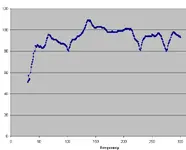Middleman
Professional Amateur
Rather than reiterate what others have said I will point out who really knows what they are talking about in this thread.
mshilarious - has provided you some excellent guidance and closest to your acoustic needs.
Ethan sells bass traps, but he is 100% correct.
Chessrock has directed you to the lowest cost solution. Get the speakers out of the corner and away from the walls. At least your midrange will be somewhat accurate.
The only thing I will add, having used those speakers for years before upgrading is, they will never provide you the whole picture but just a small window on the entire range of what you need to make a decent mix. You can stick them on the roof outside and you will still not have enough information to make a translatable mix. Actually the roof would be better, no room nodes or nulls to mess you up.
Regarding learning the monitors, I have used these monitors, you better pick up Har-Bal because it will dial in the mix you need faster. Just so you know, these are excellent second check monitors but as primaries they will be challenging. You really need the sub that was made for these speakers to have a close-to-full image.
Let's see what else?
Those beds are not the best bass traps but those mattresses are helping somewhat. Pickup some 2x4 foot foam at GC and place them about 3 feet out from the front of the speakers on the left and right wall to cut down on fluttering.
Best of luck.
mshilarious - has provided you some excellent guidance and closest to your acoustic needs.
Ethan sells bass traps, but he is 100% correct.
Chessrock has directed you to the lowest cost solution. Get the speakers out of the corner and away from the walls. At least your midrange will be somewhat accurate.
The only thing I will add, having used those speakers for years before upgrading is, they will never provide you the whole picture but just a small window on the entire range of what you need to make a decent mix. You can stick them on the roof outside and you will still not have enough information to make a translatable mix. Actually the roof would be better, no room nodes or nulls to mess you up.
Regarding learning the monitors, I have used these monitors, you better pick up Har-Bal because it will dial in the mix you need faster. Just so you know, these are excellent second check monitors but as primaries they will be challenging. You really need the sub that was made for these speakers to have a close-to-full image.
Let's see what else?
Those beds are not the best bass traps but those mattresses are helping somewhat. Pickup some 2x4 foot foam at GC and place them about 3 feet out from the front of the speakers on the left and right wall to cut down on fluttering.
Best of luck.
Last edited:









